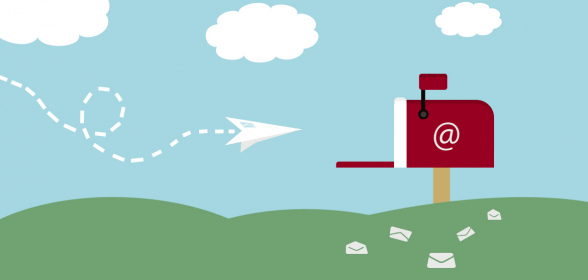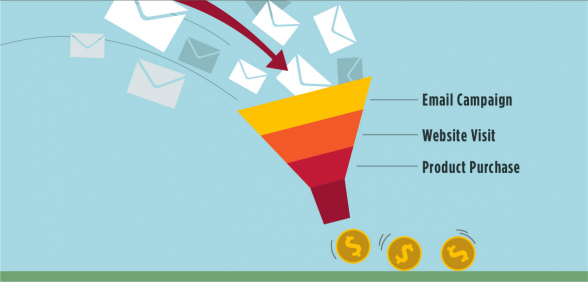How To Measure Email Marketing Success
Reading Time: 4 minutesEmail marketing is easy to track and measure. Most email marketing platforms offer a host of data that will help you gauge the efficiency of your email campaigns.
Your task is to find those metrics that suit best your email marketing goals and to keep an eye on them.
In this post we list the most important email marketing metrics, that will help you measure the success of your email marketing campaigns.
1. Deliverability
Deliverability is one of your primary metrics. If people don’t get your emails, there is no way they could read them. Maintaining high deliverability rate is the mandatory step one for conducting successful email marketing.
Here is an article on the most important factors that affect your deliveryability rate and how to improve it 26 Tips To Avoid Spam Filters and Increase Email Deliverability.
2. Open Rates
Your email open rates show the number of people (in percentage points) who open your emails. The open rates give you idea about the relevance of your email campaigns to your audience. If people like what you email them with, they will be more willing to open, read and interact with your emails.
It’s good to keep track on how your subscribers react to different content you email or A/B test your subject lines to figure out what type of subject lines attract them most. Open rates depend on various factors, like the size of your subscriber list or the way you collect your subscribers. Generally it is considered that the average open rate is 20-40%.
3. Click-through Rates
The click-through rates (CTRs) measure better the value of your email campaigns than the open rates. Usually displayed as a percentage from the total email opens, the CTR measures what percentage of your readers clicked on the links in your email.
CTR is very important because you can instantly see what is the percentage of people who are really interested in what you say and want to find out more for you and your products. CTR is also very helpful when conducting an A/B testing campaign for your calls to action. If you monitor which products and offers your clients click on, you’ll get a better understanding of their preferences.
One thing that helps improving CTR is email personalization. Make an email sound like it is written for the person reading it.
4. Conversion Rate
Conversion rates give you data which you could use to measure the financial success of your email campaign. In order to measure conversion rates of your email marketing you will need to connect your campaign with your website analytics tools.
The conversion rate shows how many people actually reached the end of your conversion path – from email, to your website, to a sign up form or a product purchase.
Conversion rates measure both direct purchases and delayed purchases. This is when a client comes back to your site from organic search or direct link, but he first found about your latest offer via email.
5. Bounce Rate
There is a number of emails that will not reach your client’s inbox and the metric measuring this is called bounce rate. Internet service providers monitor the bounce rates closely, because they play major role in determining sender’s credibility.
There are two types of bounces – soft bounces and hard bounces.
When your client’s inbox is full and your message can’t reach it, this is a soft bounce. Some servers will try to deliver the message again at a later point, but you may resend the campaign to the bounced emails too.
When you try to send an email to an email address that is closed or doesn’t exist and your email message bounces back, this is a hard bounce. You should not keep addresses with hard bounces on your list, because this will affect your sender credibility.
A bounce rate of less then 3% is considered harmful, but don’t rely on this and make sure to clear your list after each email campaign.
6. Unsubscribe Rate
The unsubscribe rate shows you how satisfied your clients are with the content of your emails. A typical unsubscribe rate is 2%, everything above means that you have to work a bit more on your content strategy. To keep unsubscribe rates low, you should email frequently enough, so people don’t forget about your emails and that they have subscribed for receiving them.
7. Abuse Reports
When an email subscriber marks your email as spam, this goes in your abuse report count. This may happen to any sender and with any campaign. Some subscribers just find it easier to mark an email as spam, than to open the email and look for the unsubscribe link.
What is more importation is that abuse report is not only a metric on your email marketing software dashboard. It is an actual spam complaint that goes to your client’s ISP, which may then block all the emails sent from your email address.
It is important that you keep track on the abuse reports in your account. Although, your email service provider is going to alert you if too much abuse reports are being filed against you.
8. Revenue
If the goal of your email marketing is to generate direct sales and not just to stay in touch with your clients, it is very important that you keep track of your email marketing ROI. For e-commerce businesses the revenue will be the most important measure of success. Use Google Analytics tools to measure the revenue coming from your email marketing campaigns.
Conclusion
The success of your email marketing depends on various factors. However, the measurability of your email marketing performance and the opportunity of conducing A/B tests allows you to monitor your results and constantly fine tune your email marketing campaigns.




